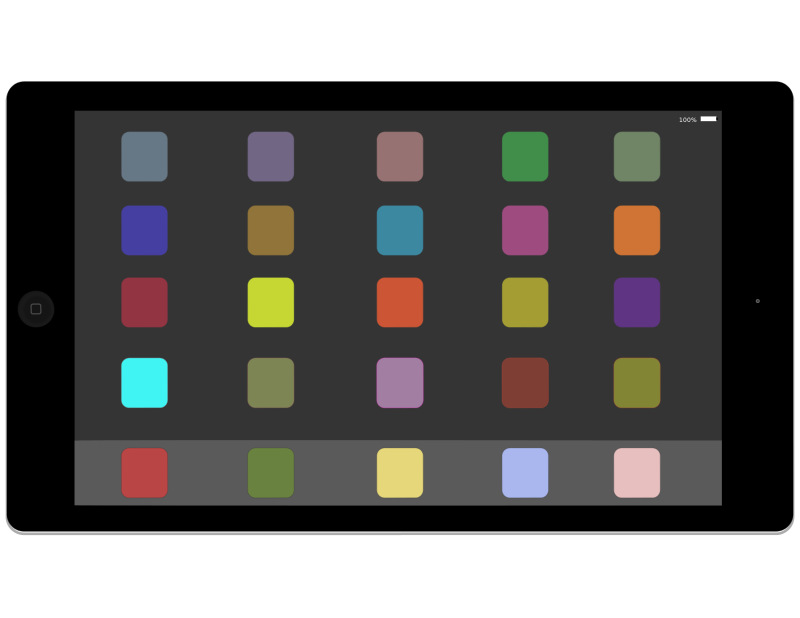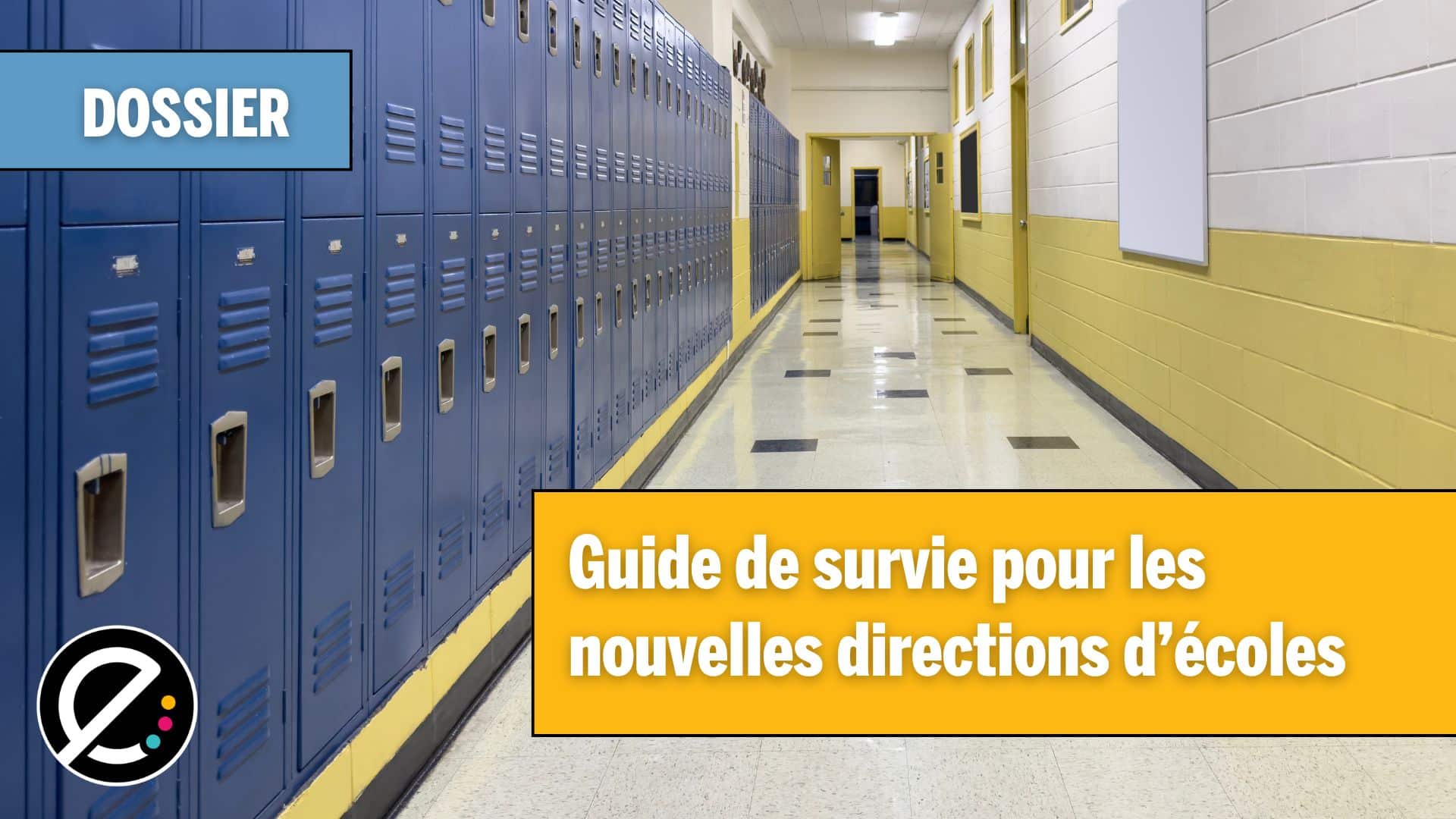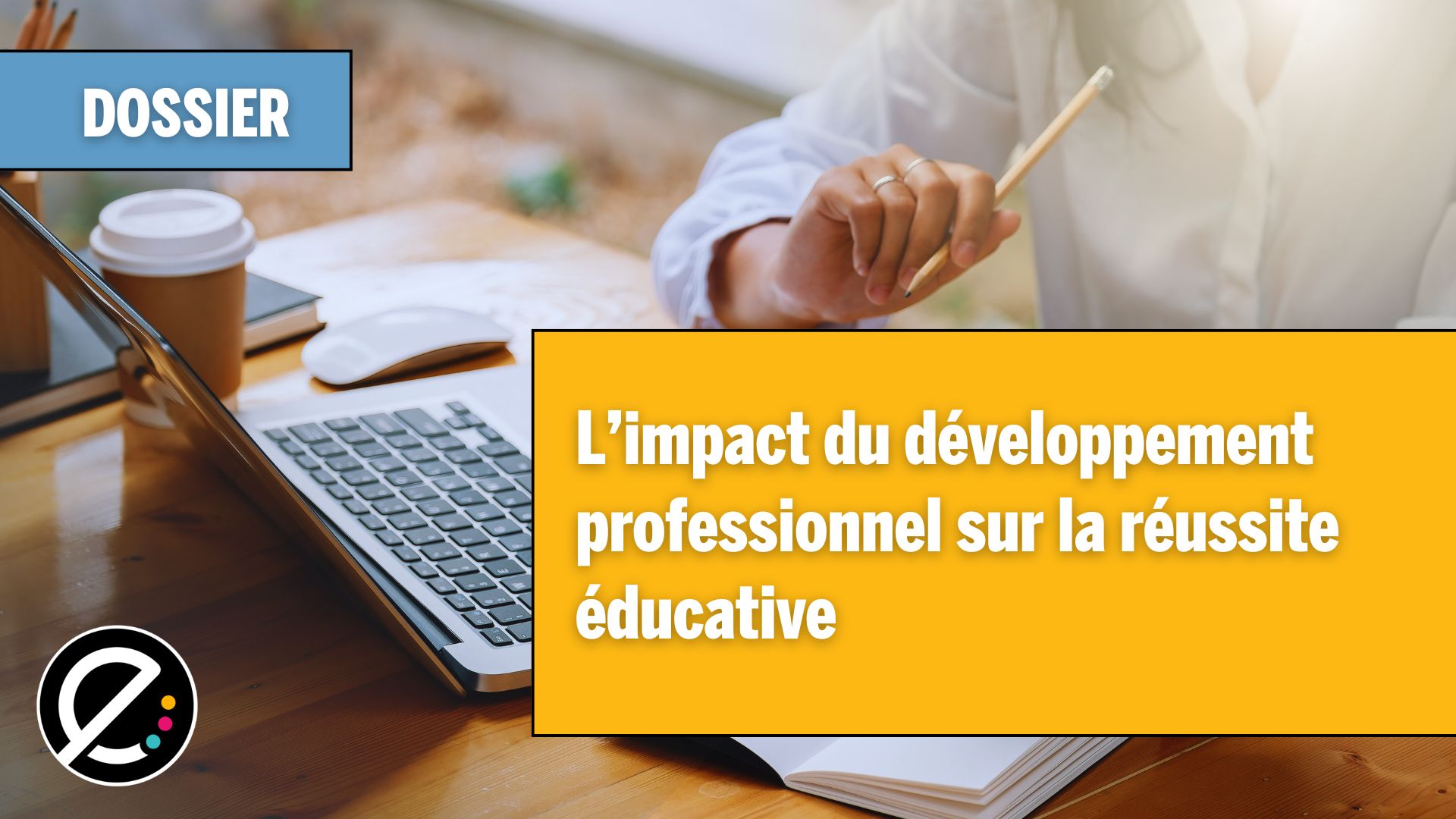Suite du dossier… Les conditions gagnantes 1 à 3, en lien avec la gestion de classe.
1. Avoir le courage de changer sa gestion de classe
Un des plus grands changements qu’amène la tablette, c’est d’inciter les enseignants à redéfinir leurs façons de faire.
La tablette étant un outil dispendieux, les budgets des écoles ne permettent généralement pas d’en mettre une dans les mains de tous les élèves. À ce jour, les programmes spéciaux permettant un ratio 1 pour 1 dans certaines écoles secondaires ne sont pas le modèle de déploiement le plus répandu. Rares aussi sont les établissements qui permettent aux élèves d’apporter leur propre appareil numérique (BYOD) et qui ont adapté leurs pratiques en ce sens. En effet, dans la plupart des écoles du Québec, les enseignants disposent parfois d’une flotte de tablettes disponible sous réservation ou, souvent, d’une ou de quelques-unes pour toute la classe.
Peu importe le modèle de déploiement choisi, le modèle « tout le monde fait la même tâche en même temps » est appelé à évoluer. Peu importent les habiletés technologiques des enseignants, les défis pédagogiques demeurent les mêmes : pour réussir l’intégration des tablettes en classe, il faut faire autrement et transformer les activités d’apprentissage des élèves.
2. Travailler en ateliers
Peu de tablettes en classe? Le travail en ateliers permet de composer avec cette réalité. Les enseignants qui sont déjà adeptes de cette pédagogie auront rapidement en tête de nouveaux projets à faire vivre aux élèves et les tablettes seront au nombre des outils pour développer leurs compétences.
Ceux qui n’ont pas fait de pas en ce sens, et ils sont probablement encore nombreux, risquent de trouver plus ardu le passage du livre à la tablette. Les récents travaux de la Chaire de recherche du Canada sur les technologies en éducation, évoquent que « faire des projets » se situe au 7e rang sur 10 des activités réalisées en classe par les élèves à l’aide de la tablette tactile, et ce bien derrière la recherche Internet, les jeux et la prise de notes de cours.
« Les enseignants ont l’habitude d’enseigner traditionnellement, observe Julie Noël, conseillère pédagogique en intégration des TIC à la Commission scolaire des Affluents. Ils sont souvent confortables lorsqu’ils parlent à leur groupe et lorsque leurs élèves travaillent à leur place. Plusieurs sont déstabilisés avec l’arrivée de la tablette. » Pourquoi? Il semble que de repenser les tâches demandées aux élèves en utilisant les forces de la tablette ne vienne pas de soi. « Ce n’est pas encore naturel, poursuit-elle. Repenser la gestion de classe pour optimiser l’utilisation des quelques tablettes disponibles ne semble pas toujours une option. Certains préfèrent demander d’augmenter le nombre de tablettes plutôt que de changer leurs façons de faire. »
Pourtant, la gestion de classe par ateliers est gagnante. « Je trouve que c’est la base, affirme Suzanne Harvey, personne-ressource du service local du RÉCIT de la Commission scolaire des Chênes. Je dirais même, LA condition pour réussir avec la technologie, quelle qu’elle soit. La technologie s’insère facilement et rend les apprentissages encore plus efficients dans ce type de gestion de classe. »
Les ateliers permettent aussi aux élèves de travailler à leur rythme et de développer leur autonomie. « Ils permettent aussi à l’enseignant de faire de la différenciation pédagogique et des activités d’enrichissement, complète Annie Marois, personne-ressource du service local du RÉCIT de la Commission scolaire des Découvreurs. J’y vois aussi un autre avantage : celui de permettre à l’enseignant qui se sent peu à l’aise avec la technologie de débuter avec moins d’élèves à la fois. »
Faut-il utiliser sa tablette en tout temps? Assurément pas. « Il faut la traiter comme un outil de travail, ajoute Daniel Ricard, personne-ressource du service local du RÉCIT à la Commission scolaire des Samares. On n’utilise pas son crayon en tout temps, ni son cahier d’activités, ni son dictionnaire. La tablette est un outil parmi les autres. Non pas une période de récompense ou de divertissement. »
Utiliser les tablettes au quotidien s’avère également une bonne stratégie. Cela permet d’intégrer les TIC plutôt que de les utiliser. « Il est préférable d’en avoir moins, mais qu’elles soient disponibles en tout temps dans la classe, suggère Annie Marois. Ça permet de les intégrer au quotidien et de développer chez les élèves le réflexe de les utiliser lorsque le besoin se fait sentir. »
Puisqu’il faut choisir, devrait-on avoir une flotte de tablettes en rotation pour toute l’école ou quelques tablettes en classe en tout temps? Les expérimentations ayant cours depuis quelques années dans les écoles du Québec portent à croire que la seconde option rapporte davantage de succès.
« Au départ, les enseignants avaient choisi d’avoir plus de tablettes, mais d’en faire la rotation, explique Suzanne Harvey. Ils avaient donc un temps bien déterminé pour réaliser leur projet avant de remettre la flotte à une autre classe. Cela a occasionné du stress, car certains enseignants n’avaient pas toujours le temps de compléter le projet. Cette façon de faire a rapidement été remise en question. »
3. Faire autrement
Les tableaux numériques interactifs ont été la continuité du tableau vert, noir ou blanc utilisé par des générations d’enseignants. Si l’aspect technologique du dispositif a été un défi en soi, son utilisation au quotidien se colle assez bien à ce que les enseignants faisaient déjà : on écrit ou on projette sur une TIC qui reste dans la classe pendant que les élèves regardent. Qu’en sera-t-il de la tablette?
« La tablette, encore plus que le TNI, change la gestion de classe, la rendant plus participative, croit Sébastien Deschamps, personne-ressource du Service local du RÉCIT à la Commission scolaire de Laval. L’enseignant doit avoir le courage de laisser choisir différents moyens de production par ses élèves. L’enseignant n’a pas à tout connaître au niveau technique. Les élèves pourront apporter plusieurs réponses et solutions. L’enseignant agit comme guide et facilite la recherche et la production de contenu. Il fait réfléchir ses élèves. »
La recherche démontre que lorsque les enseignants ont accès à de nouveaux outils technologiques, ils ont le réflexe de les utiliser en reproduisant leurs pratiques traditionnelles. « Pourtant, il faut accepter de faire autrement, pense Daniel Ricard. Il faut aller plus loin que les traditionnels plans de travail, récitation de leçons et devoirs. La tablette permet d’ouvrir ces horizons. »
Selon les travaux de l’équipe, le travail dans les manuels scolaires numériques et la prise de notes sur des documents PDF qu’il est possible d’annoter figurent, à l’heure actuelle, parmi les principaux usages de la tablette en classe. Ces usages sont la continuité de tâches traditionnelles. Accéder à du matériel numérique peut, certes, contribuer à une économie de papier ou encore à l’allègement du poids du sac d’école. Toutefois, si on se réfère au modèle SAMR, ces usages se situent au niveau de la substitution, c’est-à-dire que la technologie est utilisée pour effectuer la même tâche qu’avant.
Une activité ennuyante le demeure si elle est reproduite telle quelle sur la tablette. « Demander aux élèves d’écrire leur dictée sur la tablette n’apporte pas de valeur pédagogique ajoutée, précise Julie Noël. Ils peuvent être motivés un certain temps, mais cela fait de la tablette un cahier dispendieux! Par contre, on redéfinit l’utilisation de la tablette si l’enseignant enregistre sa voix pour que l’élève en difficulté puisse rédiger sa dictée à son rythme; ou encore si l’élève utilise la fonction prononcer pour vérifier si ce qu’il a écrit a du sens; ou s’il consulte les outils de référence en basculant d’une application à l’autre. Il améliorera, ainsi, son écriture. »
Vouloir utiliser la tablette comme on utilise un ordinateur serait l’une des cinq erreurs commises lors de l’intégration pédagogique de cet outil. La tablette est un outil de création et non pas un ordinateur portable. Si les adultes aiment avoir un clavier, il semble que les élèves s’en soucient peu. Ce sont deux outils complémentaires dont les usages varient selon les contextes. « N’espérez pas que la tablette puisse faire comme un ordinateur, et c’est tant mieux!, croit Sébastien Deschamps. Exploitez plutôt les nouvelles opportunités d’apprentissage qu’elle offre avec des applications plus simples et variées, permettant la création de productions multimédia à l’aide d’une interface tactile intuitive. Ces avantages se traduisent par un temps consacré au contenu qui est supérieur à celui consacré au contenant. »
Dans ce dossier…
La gestion de classe
1. Avoir le courage de changer sa gestion de classe
2. Travailler par ateliers
3. Faire autrement
Le projet pédagogique
4. S’approprier la tablette… avant le début du projet pédagogique
5. Cibler ses intentions pédagogiques
6. Opter pour des applications de création
7. Simplifier les projets pédagogiques… et se concentrer sur le contenu
Le développement de compétences chez les élèves
8. Planifier les actions des élèves
9. Responsabiliser les élèves
10. Développer des compétences… qui leur seront utiles toute leur vie
Conclusion du dossier
Ressources utiles






